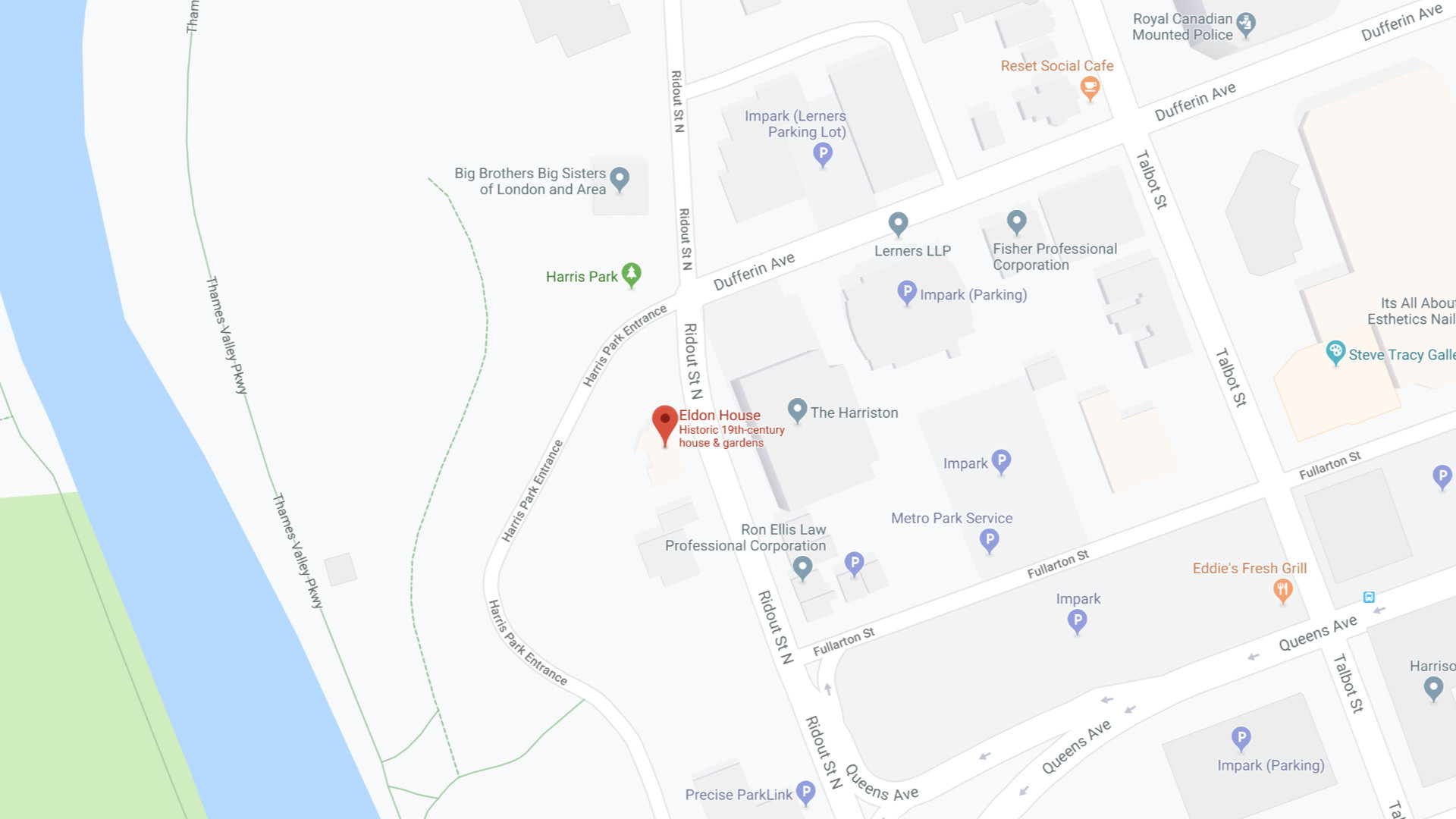A Visual History of Eldon House
The House
As you enter through the front doors, you will be welcomed by an Eldon House Historical Interpreter who will answer your questions and assist in making your visit as convenient and comfortable as possible. The tours of the museum are self-guided with opportunity to learn about the life and times and collections of Harris Family from staff and panels throughout the historic home.
(click the labeled areas of the map for more information)
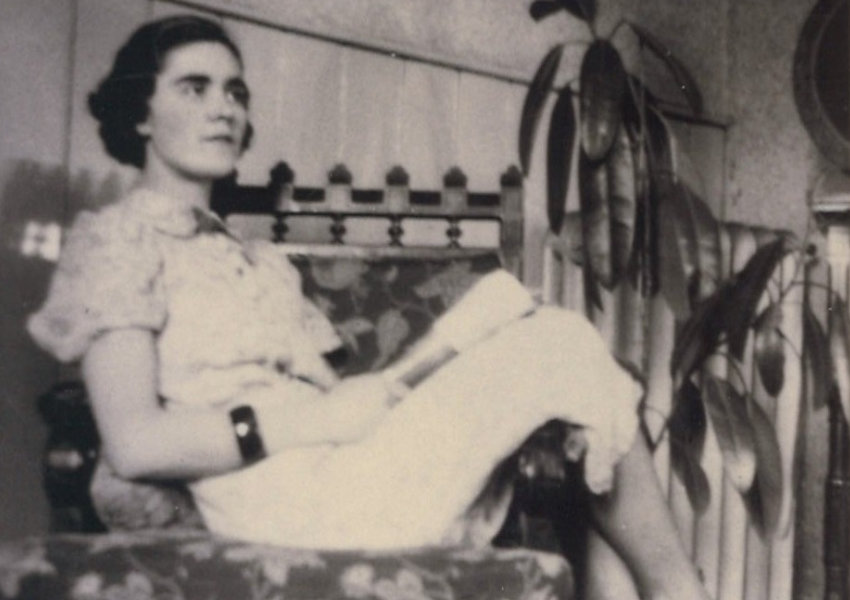
Staff Room
The Eldon House staff room was once the servant’s sitting room. It had some chairs and a gramophone, and was a space for recreation. It now serves as the staff room and administrative space.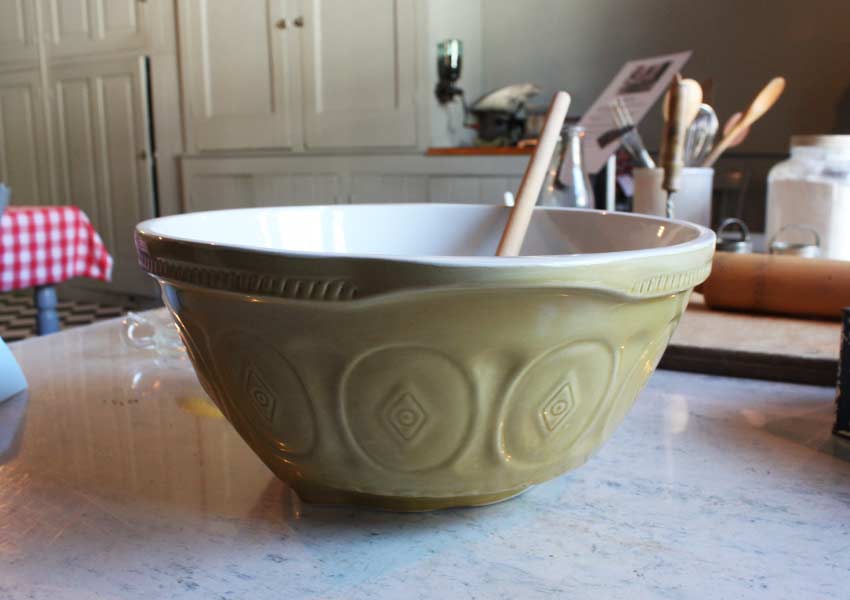
Kitchen
The kitchen is part of the 1877 addition and at that time, held a large wood-burning stove where today’s 1920s refrigerator stands. The small gas hot plate is vented to its old chimney. The staff ate at the centre table while the other table was the cook’s work space. Appliances and objects in the cupboards show equipment available in the late 1920s, the period to which the kitchen has been restored. This part of the house was continually kept up to date by the family, who remained in the house until 1960, the year after Milly Harris’ death. Above the door are the bells, once activated by the bell pulls in the family’s part of the house. These were answered by the parlour maid.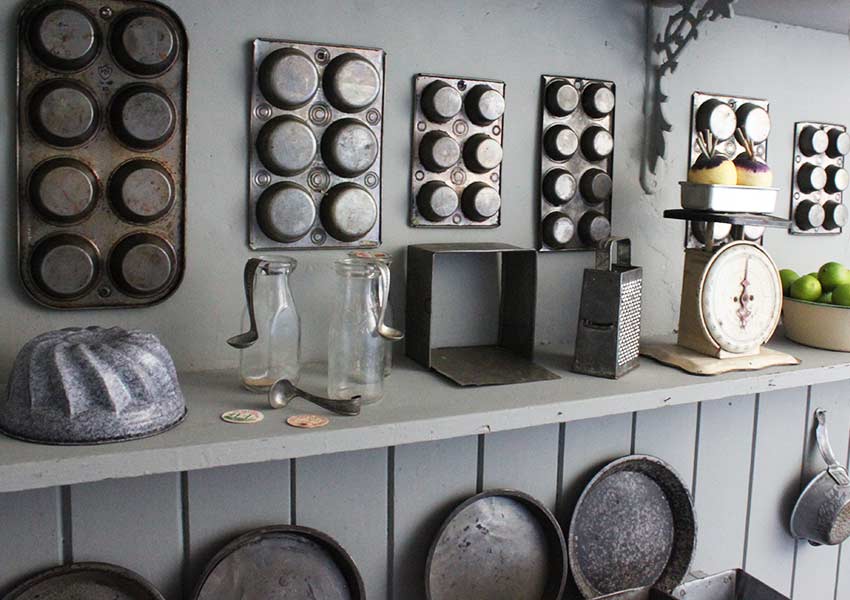
Larder
Conveniently located next to the back door is the unheated area used for the storage of bulk food and large items of kitchen equipment. Groceries were delivered to the house by local tradespeople; the family’s cows provided milk, and vegetables and fruit were grown in the garden by the river. This space was also used by day labourers who came in to work with specific food products.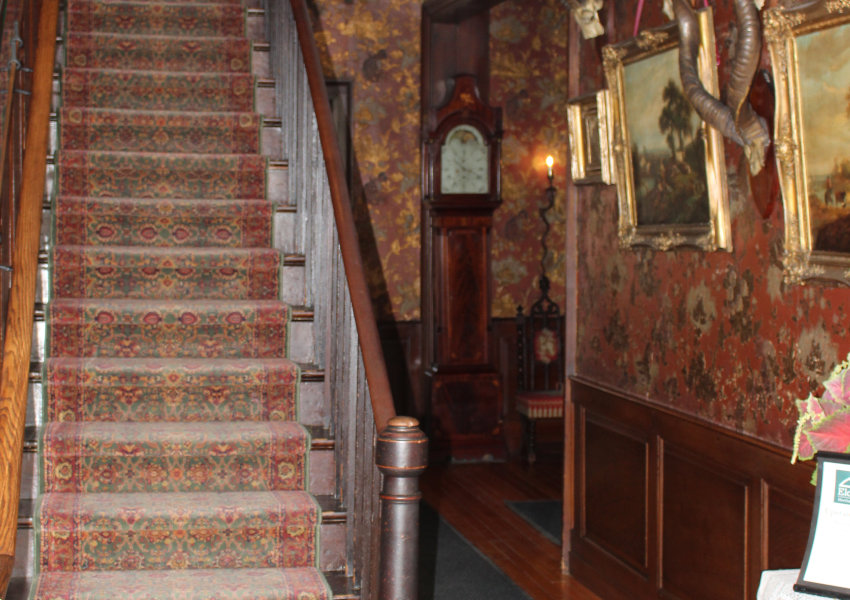
Front Hall
The entire hall area is covered with Japanese faux leather wallpaper bought in 1897 when the family travelled in Japan. At the entry is an elephant foot umbrella stand. At the foot of the stairs hangs James Hamilton’s 1841 painting of Eldon House, which shows the house and property looking much as they did when John and Amelia Harris moved into their new home in 1834. Next to the front door is a print of The Great Military Steeple Chase 1843, showing the Court House and the area at the Forks of the Thames.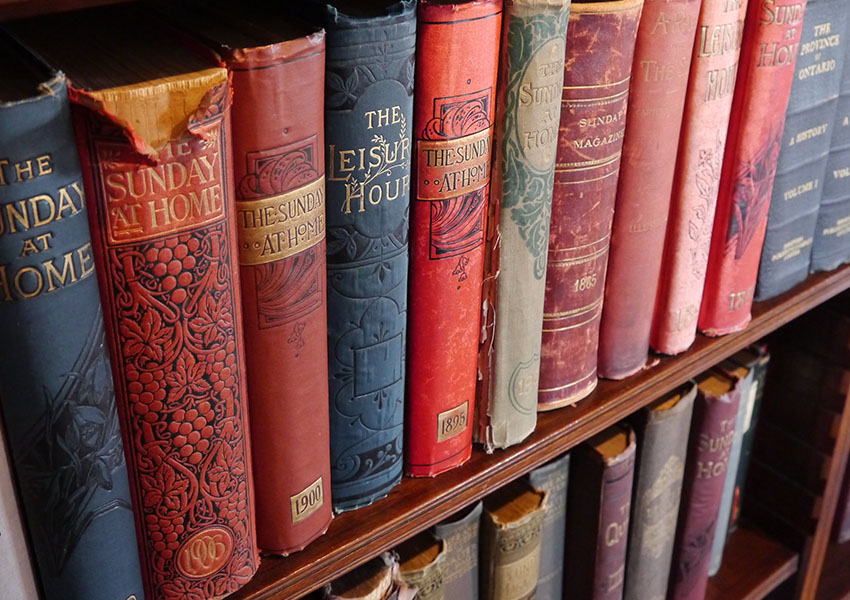
Library
During the years 1834 to 1877, this room was the family parlour and the scene of many lively social gatherings; it then became the library and was used as a family room would be today. The cedar ceiling was installed in 1895 and the Japanese wallpaper in the late 1890s. A large cabinet in the room was part of Lucy Ronalds Harris’ inheritance from the Ronalds family and was made in England in 1821 to contain volumes of pressed flowers from Europe, the United Kingdom, and what is now Kew Gardens; lower shelves display souvenirs of world travel and other Harris mementos. Delft fireplace tiles belonged to Amelia Harris’ Dutch ancestors. Originally there was a fireplace in every room, the only heat sources in the house. An embroidered pole screen was used to protect a lady’s face from the direct heat. Other notable items include a needlepoint bell pull used to summon the maid, a small painting of the Rebellion supply ship Caroline, and a document signed by George III making Amelia Harris’s father, Samuel Ryerse, a judge in the new colony of Upper Canada.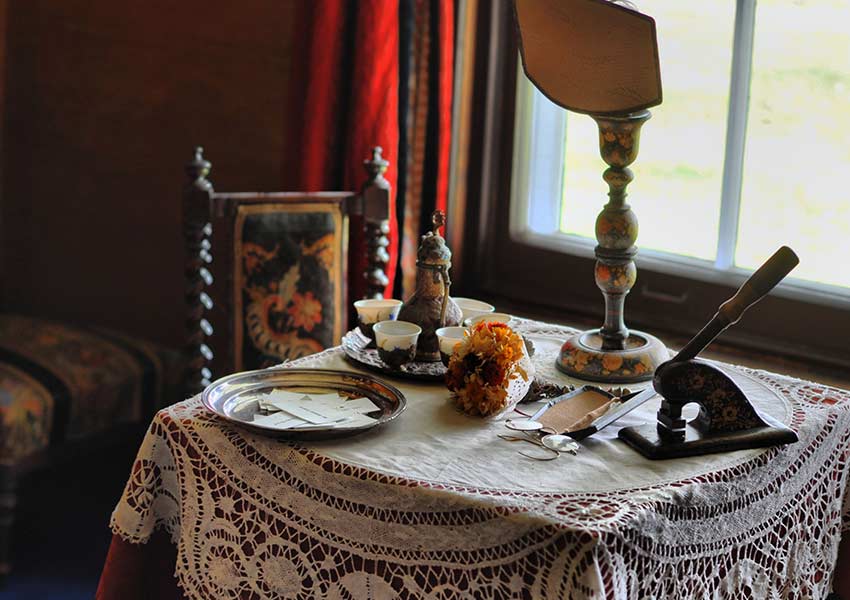
Morning Room
The morning room as it appears today can be considered as a ladies sitting room or office. During the early years of Eldon House, the room was John and Amelia Harris’ bedroom, while their eight (and soon 10) children slept upstairs. In the latter 19th century, the room became a space in which the ladies, Mrs. Harris in particular, would spend the duration of the morning doing work. The work that was enacted included handicrafts such as embroidery and sewing, letter and journal writing, as well as giving daily direction to the servants. Because the work of the day was to take place in the morning, it was socially understood that visits to or from friends ought to be short: hence the array of uncomfortable small chairs which can be found in the room. Surrounding the fireplace are blue Delft scriptural tiles that echo the colours of the extensive collection of Chinese and English porcelain. Two Japanese cabinets, acquired during George and Lucy Harris’s around-the-world trip in 1897 to 1898, are separated by three Japanese scrolls mounted as a screen.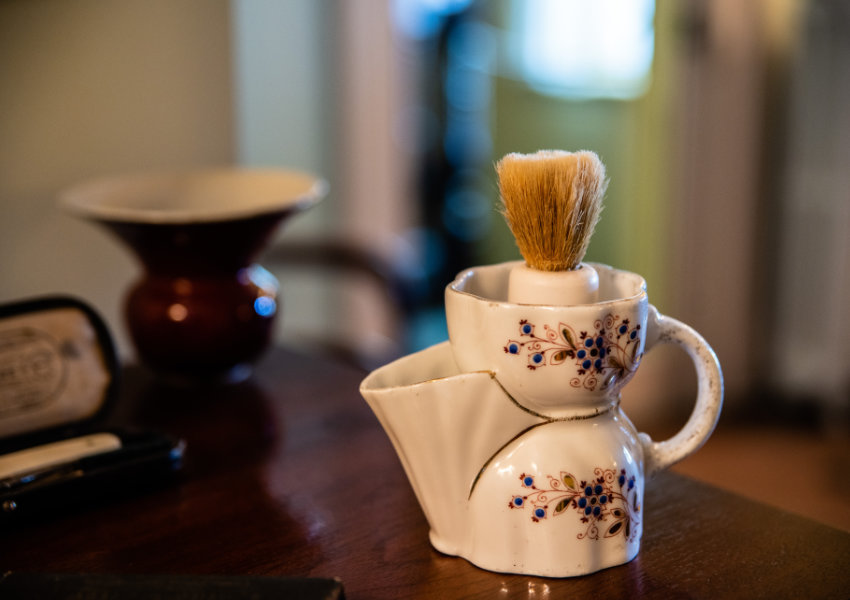
Dressing Room
This room was used as a bedroom for many years, but was later converted to a dressing room adjacent to the Red Bedroom. Near the window stands a commode chair. Even after the 1877 addition of the bathroom, such a chair would have been favoured by the older family members. George Harris’ travelling bathtub, which he took on the family trip around the world in 1897, is not much smaller than the typical portable tub in use in the house before 1877. Ronald Harris inherited the portable bathtub from his father and would make good use of it during his stay in Africa as a mining engineer. Beside it is the door to the elevator, installed in the 1950s to permit Milly Harris access to the second floor in her wheelchair.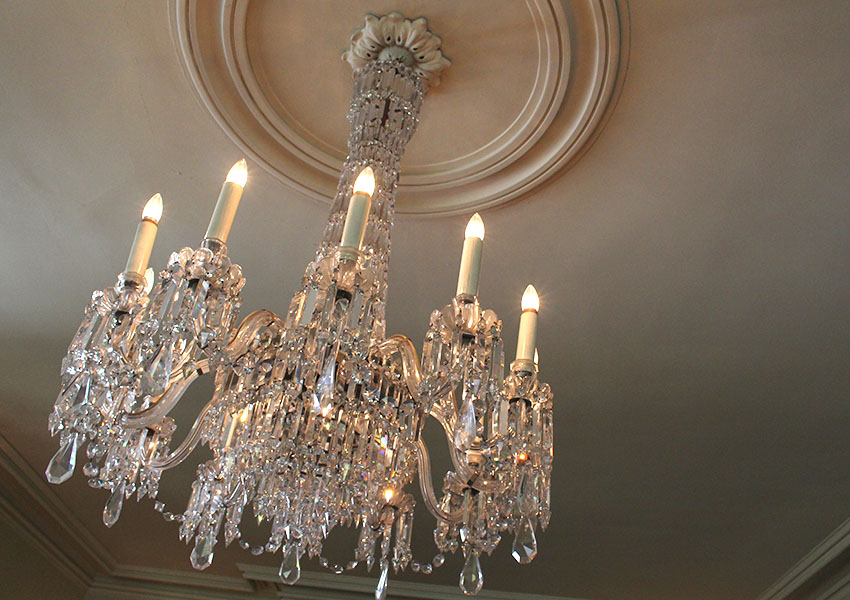
Drawing Room
In 1877, Eldon House was enlarged considerably. The addition of this formal, high-ceilinged room enabled Edward and Sophia Harris to entertain more elaborately than had Edward’s parents, John and Amelia. For many years, the Drawing Room was furnished with high Victorian pieces, but the third generation owners, Ronald Harris and his wife Lorna Gibbons Harris, redecorated it in 1936 using many items the family had collected over the preceding 100 years and creating the quiet elegance it has today. On the walls of the Drawing Room hang watercolour portraits of John and Amelia Harris and eight of their children.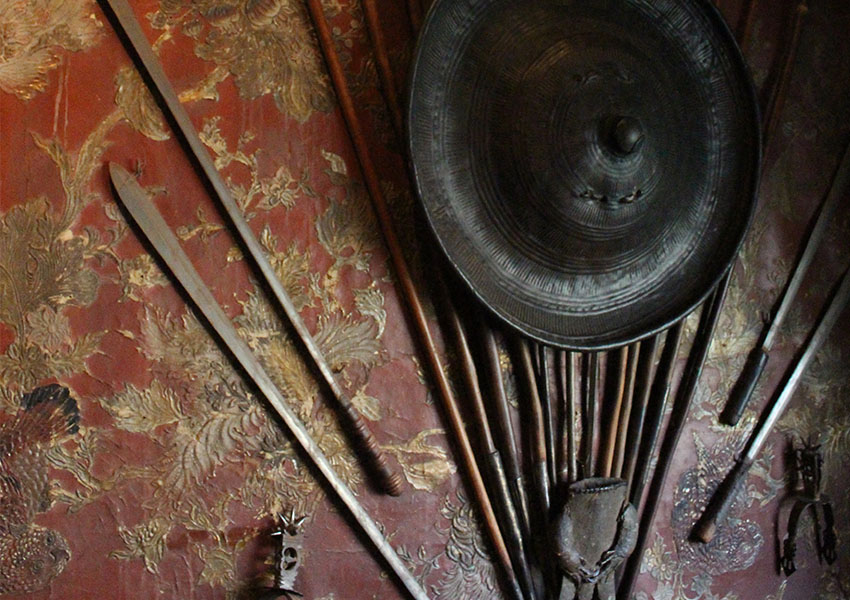
Back Hall
Lining the walls are mementos of Ronald Harris’ years in southern Africa as a mining engineer; Ronald was one of the three surviving children of George and Lucy. Most of the trophy horns are identified and dated, many of which were shot for food. The skull of a lioness that killed a bearer on an expedition is noteworthy, as is the collection of walking sticks in an elephant foot. The curio-cabinet contains small objects brought home from travels all over the world. Next to the Drawing Room door stands a long case clock, c. 1760. It is American made and bears the Ryerse family swan on its pediment. Above the door to the kitchen is a tarpon caught by Milly Harris, Ronald’s sister, in the Gulf of Mexico. The nook by the window was intended as a smoking area for the men of the household.
Pantry
The pantry/servery was the domain of the parlour maid. She served the meals and looked after the china and silver stored in the high cupboards. Since the family retained their dinner services and most of the silver when Eldon House was given to the city in 1960, many items on display here were donated by members of the public. This area was often referred to as the butlers pantry, but in fact the Harris' only employed a butler for a short time, preferring to leave household management to the cook. Sometimes the head gardener, in formal evening attire, assisted the parlour maid in serving at large dinner parties.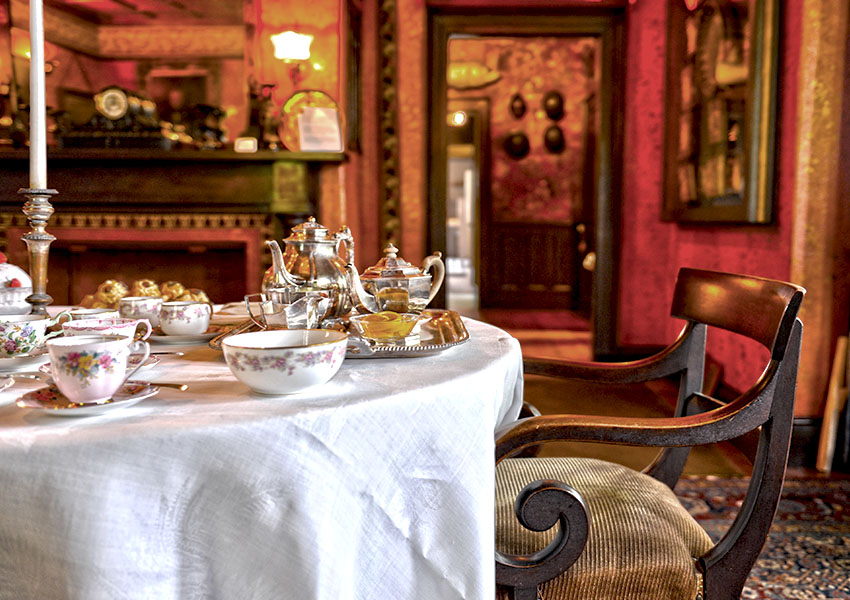
Dining Room
This was the largest room in the house before the Drawing Room was added in 1877. Successive generations of Harris children used a small high chair that is on display. The oil portraits and many of the miniatures and silhouettes show members of the Ronalds family (Lucy Ronalds married George Harris in 1867). Behind the collection of miniatures is a lincrusta wallpaper that once covered the entire room. It darkened over the years and was replaced in 1986 by the painted anaglyptic paper. Displayed is a Regency tea poi, or caddy, kept locked as tea was an expensive commodity in the early 19th century. The ceiling is cedar while the fireplace is black walnut. In the small glass-fronted cupboard at the right-hand end of the fireplace is a china menu; it shows the meal eaten at the last dinner party held at Eldon House, in January, 1960. The brass gong was used to call the family to meals and the “Tantalus”, made from a rhinoceros foot, houses a locked liquor decanter.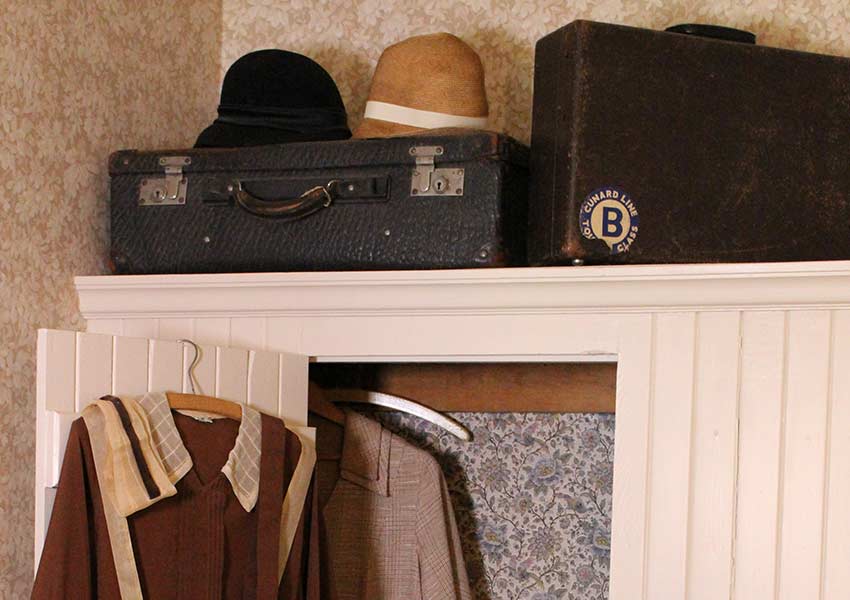
Servants Quarters
These two rooms form part of the Servants’ Quarters. In 1930 it was an area consisting of four bedrooms, two bathrooms (one used in part for hand laundry) and a sewing room. The Maid’s Bedroom, the only one of the original four on view, has been recreated with linoleum, wallpaper and window fittings similar to those available in 1930. The furniture is from the Eldon House collection and may once have been in this room or one of the other staff bedrooms. The uniform on display was donated by Mary (Kidd) Klojggard, parlourmaid at Eldon House from 1930-1937; she last wore it in this house in January 1960, when she returned to help serve at the Harris’ final Eldon House dinner party. Two pictures of sheep were donated by Mae Bottrell whose aunt, Euphe-mia Deacon was a maid here in the 1930s. Miss Deacon was given the sheep pictures by Lorna Gibbons Harris as a memento of her time at Eldon House.
Bathroom
Eldon House had no interior bathroom prior to the 1877 addition. Basins, hip baths, a privy and chamberpots were used, and water was carried up and down the back stairs by the maids. The porcelain fixtures seen here date to about 1915 and are at least the second set to be installed. City water was piped from Springbank reservoir by 1878 but the city sanitary sewer system was not complete until 1898.
Nursery
This reconstructed interior contains a collection of children’s toys and games from the 19th and early 20th centuries. Dolls are made of a variety of materials, including wax, porcelain, composition and leather. Books and other small figurines line the bookshelf. A Victorian Gothic cradle was used by several generations of Harris babies sits in the corner.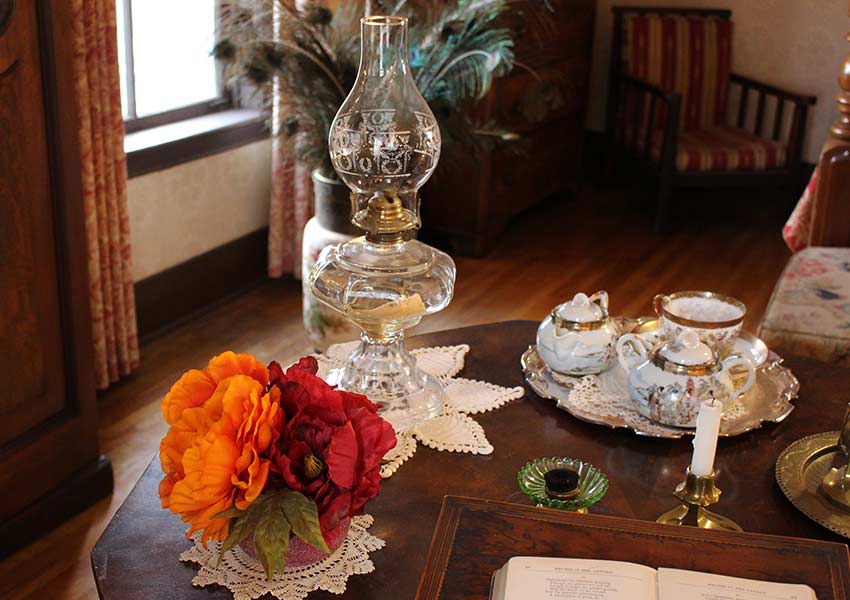
Red Room
Harris family tradition says that the black walnut testerbed, as large as a modern queen-size, was John and Amelia Harris’ marriage bed from 1815. The Jacquard coverlet was made by John Campbell who brought a Jacquard loom to Komoka, Ontario in the 1830s. Its pattern incorporates a design of sumac leaves and is coloured with dyes from the sumac plant. The small footstool holds a pair of stone-ware bed warmers or “pigs” and on the table an oil lamp is a reminder of earlier years. Originally two smaller bedrooms occupied this space; late in the 19th century the partition was removed. Over the 125 years that Eldon House was lived in, the designation of the bedrooms has varied, so while the Red Bedroom may more recently have been used as the Master Bedroom, this was not always the case.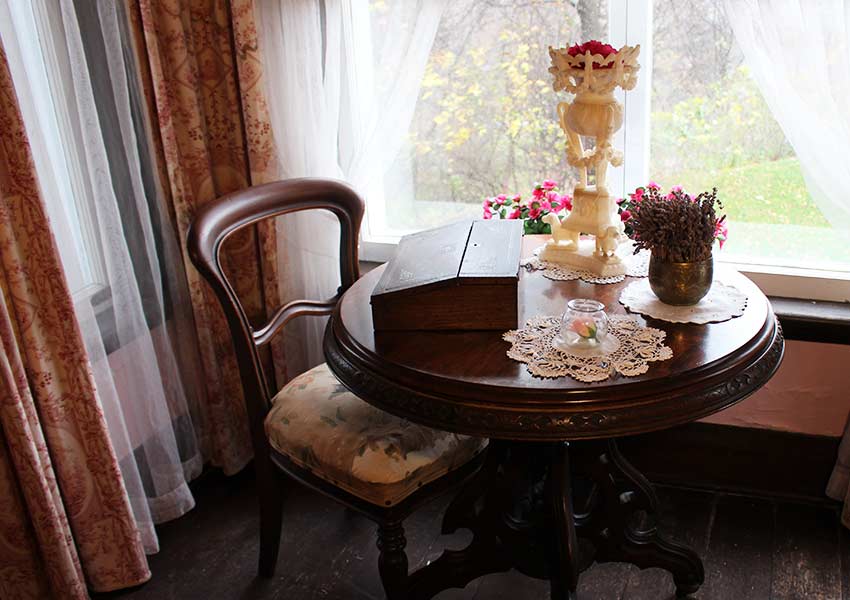
Pink Bedroom
The only remaining fireplace on the second floor is located in this room. In the late 19th century, the grate was replaced so it could burn coal. The English tiles around it illustrate stories from Shakespeare. The half-testerbed is dated to the early 20th century. On the table, a writing box holds pens, ink and blotting paper. The Harris family constantly corresponded with absent friends and family members, often writing and receiving several letters a day. The bedrooms are furnished as they were after the family size decreased in the second generation, allowing each person a private bedroom.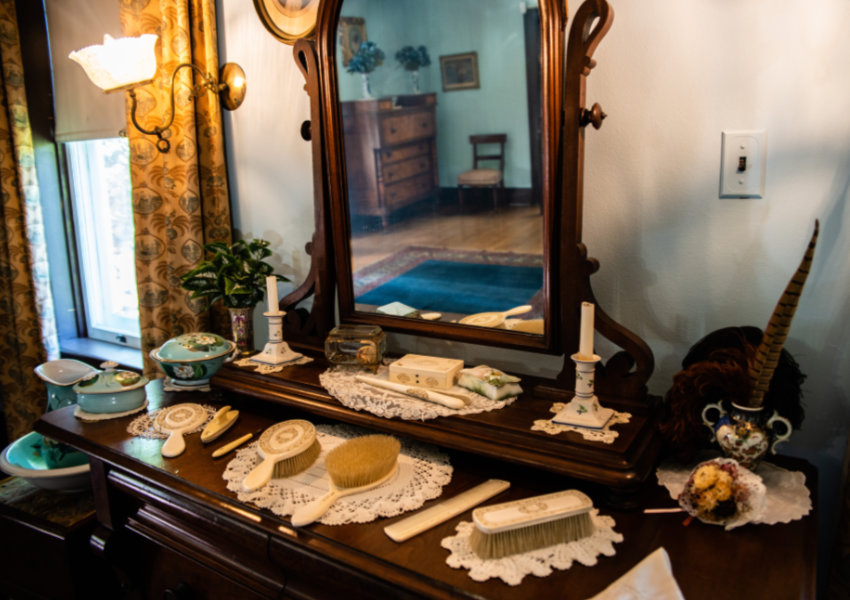
Blue Bedroom
A Sheraton-style late 18th century testerbed is covered with a handknitted bedspread made by women of the family. A high-backed prayer chair at the foot of the bed allowed one to kneel for prayers, yet avoid the chilly floor. A large clothes press of calamander wood, a species of ebony, was made in England c. 1870 as early houses lacked built-in closets. A Canadian bird’s eye maple chest, c.1840, holds a dressing case with the monogram of Miss Amelia Archange Harris (Milly). Above it hangs a tinted photograph of her mother, Lucy Ronalds Harris. A lady’s writing desk is actually a converted spinet, a small precursor of the piano. Between the Blue and Pink bedrooms is a small bathroom, installed in the 1940s.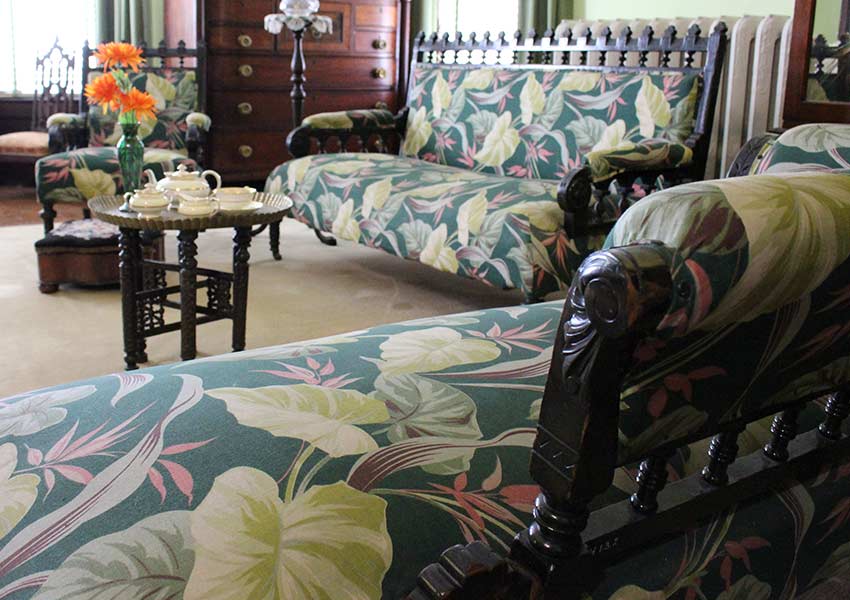
Green Bedroom
This room is part of the 1877 addition and was once connected by a door and a set of steps to the Pink Bedroom. A walnut four-poster bed, with its painted Florentine canopy was made in England about 1790; it was inherited by Lucy Ronalds Harris from her English connections. The supports for the mattress are rope, and the original mattress was made of feathers. A small footstool was needed to reach a bed of this height. The bedside commode, also c. 1790, is a reminder that Eldon House was built before the days of indoor plumbing. By the window are two tiny Canadian “Churchwarden” Gothic chairs made of black walnut.Book A Guided Tour Today
Education programs and tours are offered all year round for students and groups of all ages. Click below to find out more!
